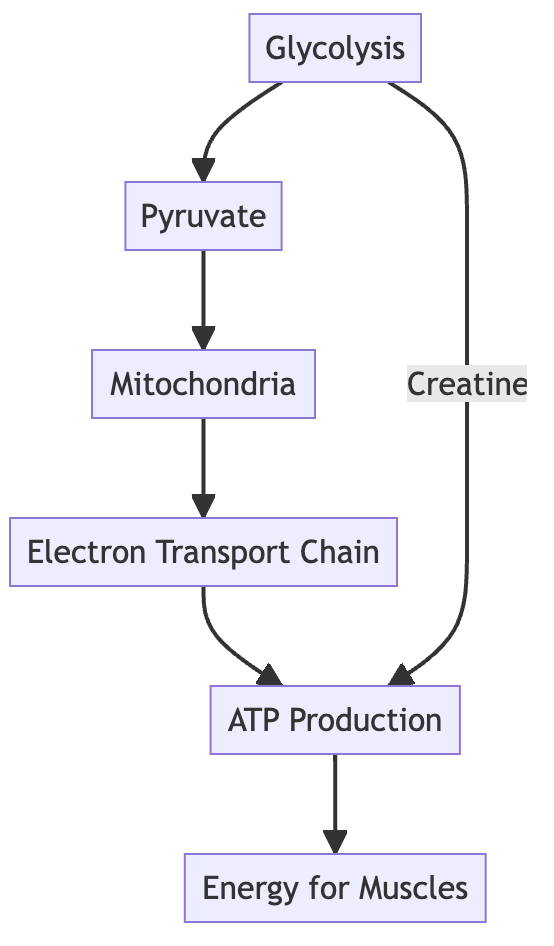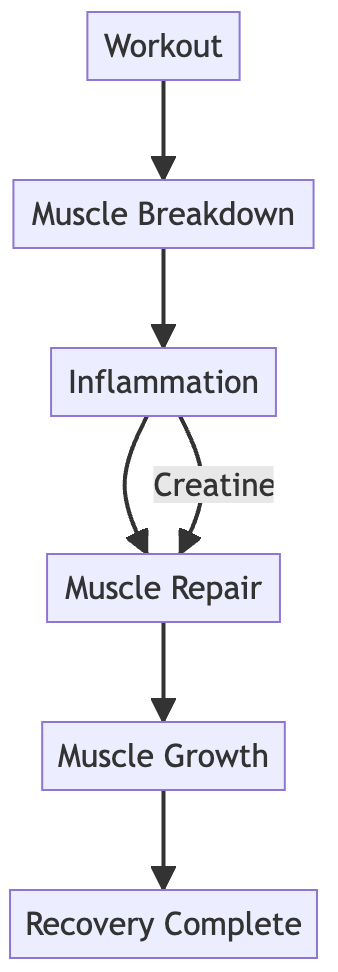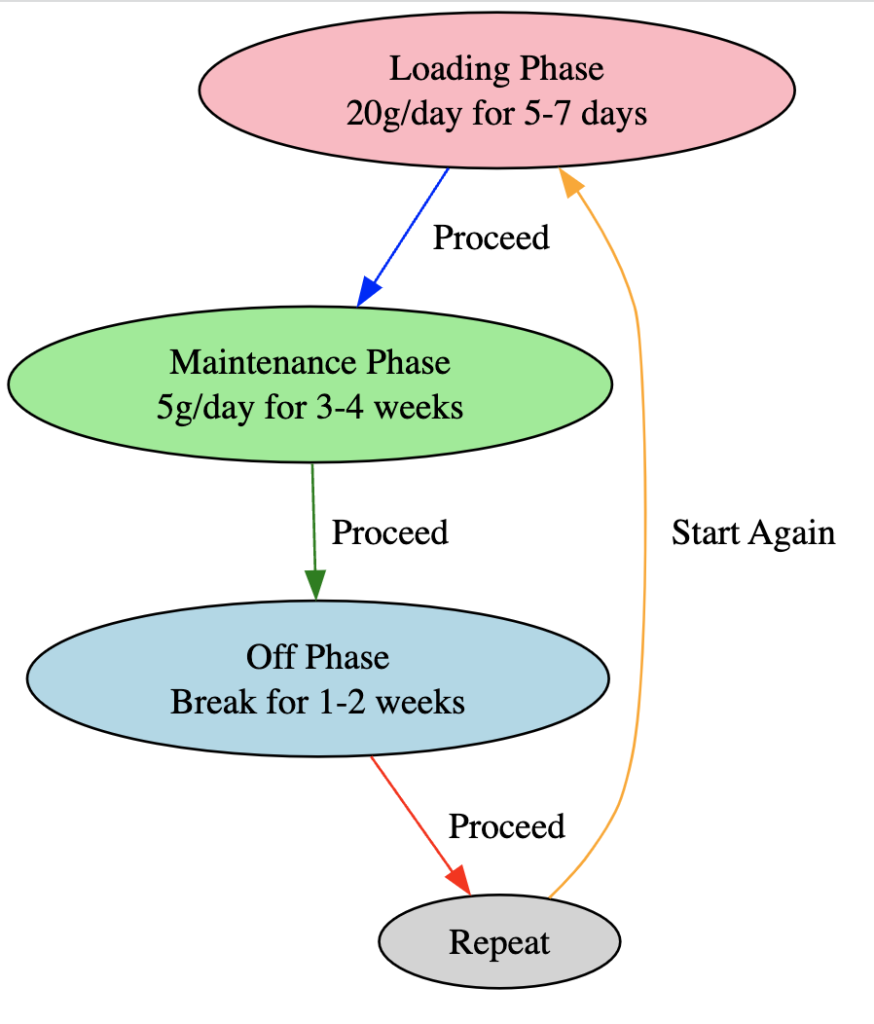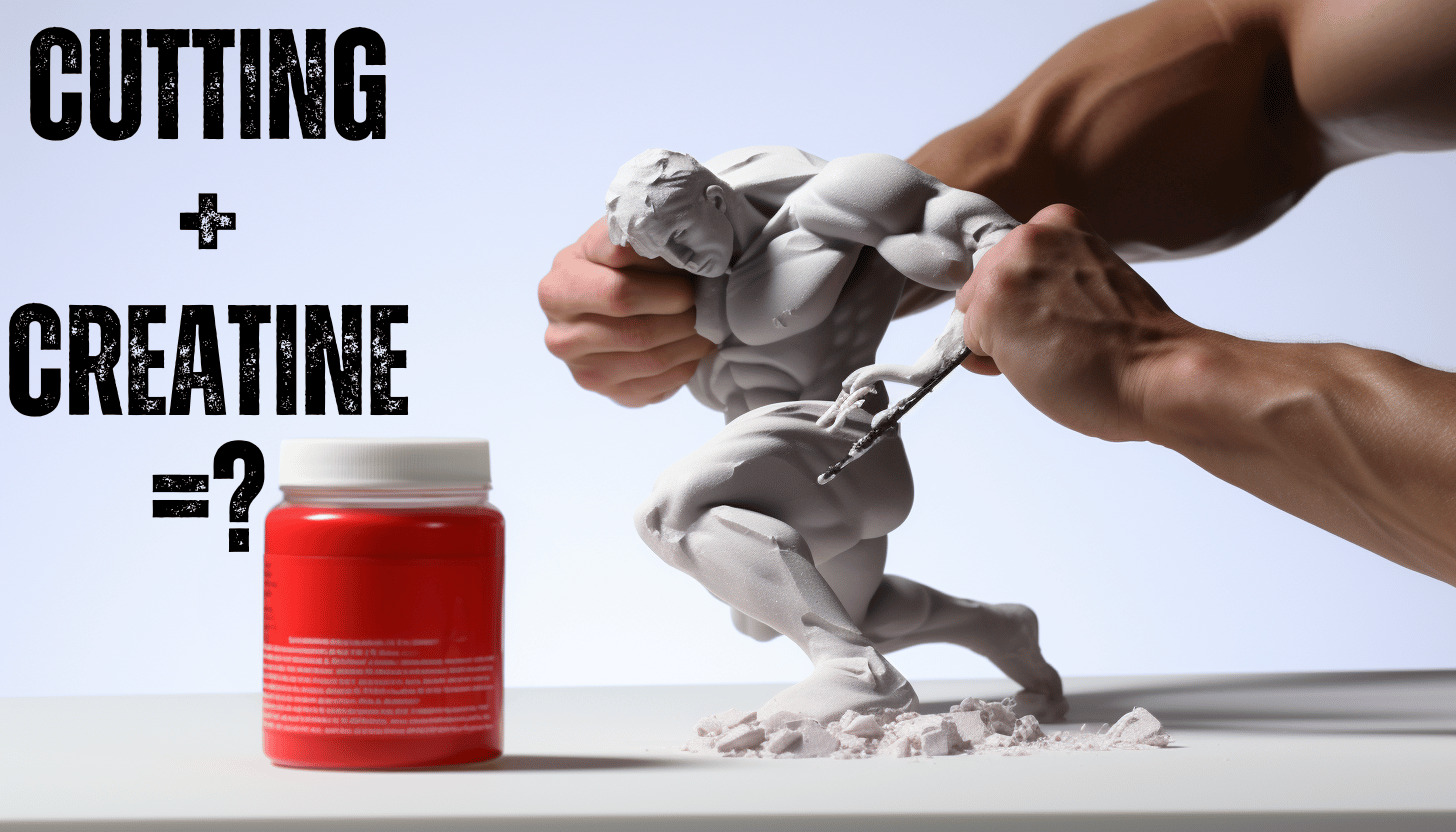Ah, the age-old fitness dilemma: how to lose that pesky fat without saying goodbye to your hard-earned muscles. It’s like trying to keep your cake and eat it—only this time, the cake is made of protein and sweat.
Supplements often come to the rescue in this Herculean task, but there’s one that’s always up for debate: creatine.
So, can you take creatine while cutting, or is it just going to mess up your game? The answer is YES! Stick around, because we’re about to dissect this question like a frog in a high school biology class.
The Basics of Creatine
Let’s start with the star of the show: creatine. Imagine it as the superhero of the supplement world, but without the cape and the identity crisis. Your body naturally produces this organic compound in places like your liver, kidneys, and even your brain.
It’s made up of three amino acids—arginine, glycine, and methionine—and its main gig is to help produce energy during high-intensity, short-duration activities. Think lifting weights, sprinting, or any activity that makes you feel like your muscles are on fire.
But creatine isn’t just about giving you that extra oomph. It also plays a role in muscle recovery, cognitive function, and even heart health. It’s like the Swiss Army knife of supplements, versatile and useful in more ways than one.
The Cutting Phase: A Quick Overview
Now, let’s talk about the other half of this equation: cutting. No, we’re not talking about arts and crafts; we’re talking about the phase where you try to shed body fat while maintaining as much muscle mass as possible. It’s like trying to remove the weeds from your garden without killing the flowers. You’re eating fewer calories, doing more cardio, and essentially, making sacrifices to the gods of leanness.
The challenge? Well, your body isn’t a fan of this whole “losing fat but keeping muscle” idea. It’s a bit like trying to convince a toddler to eat their veggies but leave the cake alone. Difficult, but not impossible.
The Science Behind Creatine and Cutting
Alright, let’s get nerdy for a moment. Don’t worry, I’ll break it down so you don’t need a Ph.D. to get it. When it comes to creatine and cutting, the science is like that friend who’s always late to the party but brings the best snacks—totally worth the wait.

The Muscle Retention Saga
First off, creatine is a muscle’s best friend. It helps produce adenosine triphosphate (ATP), which is basically the currency your muscles use to do, well, anything.
When you’re cutting, your caloric deficit can make your muscles feel like they’re running on fumes. Creatine swoops in like a financial advisor for your muscles, helping them manage their ATP budget more efficiently. This means you can maintain, or even build, muscle mass while you’re busy shedding fat.
The Fat Loss Paradox
Now, you might be thinking, “But what about fat loss? Isn’t that the whole point of cutting?” You’re not wrong.
Here’s where it gets interesting: some studies suggest that creatine can actually aid in fat loss. How? By boosting your basal metabolic rate.
In layman’s terms, it helps you burn more calories even when you’re not lifting a finger. It’s like having a passive income stream, but for calorie burning.
The Need for More Research
But let’s not get carried away. While the initial research is promising, it’s not set in stone. Think of it as a movie trailer that looks good but doesn’t guarantee a blockbuster.
More studies are needed to fully understand how creatine impacts fat loss and muscle retention during a cutting phase. So, while the science is leaning towards a “yes, go ahead and take creatine,” it’s always good to be a bit skeptical until we get more data. My personal choice though is to take creatine while cutting.
Pros of Taking Creatine While Cutting
Alright, let’s talk about why creatine might just be the wingman you didn’t know you needed in your cutting journey. It’s like that friend who not only takes great photos of you for your dating profile but also knows the best spots in town to show off those biceps. Here are the pros:
Muscle Retention
First and foremost, creatine is like a security guard for your muscles. When you’re cutting, you’re basically telling your body, “Hey, we need to lose weight, but let’s keep the muscles, okay?”
Creatine steps in and says, “I got you.” It helps your muscles hold onto the energy they need, making it easier to maintain that hard-earned muscle mass.
Enhanced Energy and Performance
Remember ATP, the energy currency for your muscles?
Creatine is like an ATM that’s always open, providing a quick and convenient source of energy. This means you can still kill it in the gym even when you’re running on fewer calories.
It’s like having a turbo button for those last few reps or sprints.

Faster Recovery
If you’ve ever felt like you’ve been hit by a truck the day after a workout, listen up. Creatine helps speed up muscle recovery. It reduces muscle cell damage and inflammation following exhaustive exercise.
So, instead of crawling out of the gym, you’ll be strutting out, ready to take on the world—or at least, your next workout.
Cognitive Benefits
Creatine isn’t just a muscle guy; it’s also a brain guy. Some studies suggest that creatine can help improve cognitive function, especially in tasks that require short-term memory and quick thinking. So, not only will you look good, but you’ll also be sharper and quicker on the uptake.
Cons and Considerations
Alright, let’s flip the coin and look at the other side. Creatine may be the life of the party, but even the best parties have a few downsides—like that guy who just won’t stop talking about his CrossFit workouts. Here are some things to consider:
Water Retention
First up, the infamous water retention. Creatine pulls water into your muscle cells, which is great for performance but can make you feel a bit like a water balloon.1
If you’re cutting to step on stage or make weight for a competition, this could be a deal-breaker. It’s like wearing a heavy coat to a weigh-in; it’s not fat, but it’s still weight.
Timing and Dosage
Creatine isn’t a “take it whenever you feel like it” kind of supplement. Timing and dosage matter. Too much can lead to digestive issues2, and too little won’t give you the benefits you’re looking for. It’s like cooking; a pinch of salt can make the dish, but too much ruins it.
Not a Magic Pill
Let’s be clear: creatine isn’t going to do the work for you. It’s a supplement, not a substitute for hard work and a good diet. If your cutting phase is more like a “sitting on the couch eating chips” phase, don’t expect creatine to pick up the slack.
Individual Differences
Here’s the kicker: not everyone responds to creatine the same way. Some people are “non-responders,” which is a fancy way of saying creatine doesn’t do much for them3. It’s like being lactose intolerant; it doesn’t matter how good the cheese is if your body can’t handle it.
Consult Your Healthcare Provider
Last but not least, always consult with a healthcare provider before adding any supplement to your routine, especially if you have existing health conditions or are taking other medications. It’s like checking the weather before you go hiking; you need to know what you’re getting into.

Expert Opinions
Alright, let’s bring in the big guns. You wouldn’t buy a car without checking out some reviews, right? Same goes for messing with your body’s chemistry. Here’s what the experts have to say:
The Medical Perspective
Doctors and healthcare providers generally give creatine a thumbs-up for its safety profile, but they also emphasize the need for proper dosage and timing. If you have kidney issues or other medical conditions, consult your healthcare provider before adding creatine to your supplement stack. It’s like your mom telling you to wear a helmet while biking; the activity is safe, but precautions never hurt.
The Fitness Coaches Weigh In
Fitness coaches and personal trainers often swear by creatine for both bulking and cutting phases. They see it as a tool in the toolbox, useful but not to be over-relied upon. It’s like having a killer guitar solo in a song; it enhances the experience but isn’t the whole show.
Athletes and Bodybuilders
Who better to talk about cutting and creatine than those who live it? Many athletes and bodybuilders use creatine during their cutting phases to maintain performance and muscle mass. However, some opt-out when they’re close to competitions due to water retention concerns. It’s a tactical decision, like choosing the right club in golf.
How to Take Creatine While Cutting
Alright, you’ve weighed the pros and cons, listened to the experts, and heard some real-world stories. Now you’re probably wondering, “Okay, cool, but how do I actually take this stuff?” Don’t worry, I’ve got you covered. Let’s break down the how-to’s like a Lego set—piece by piece.
Recommended Dosages
The general recommendation is to start with a “loading phase” of about 20 grams per day for 5-7 days, split into four 5-gram servings.
After that, you can drop down to a “maintenance phase” of 3-5 grams per day.
It’s like revving up your car before hitting the highway; you start fast, then cruise.
Timing: Pre or Post-Workout?
Ah, the age-old debate: should you take creatine before or after your workout? The answer is… there’s no 100% conclusive data. Studies show that as long as you’re consistent, the timing isn’t a game-changer, but in general take it around the time of your workout. The most common advice (which is also what I do) is to take creatine 30 minutes after a workout.
Registered dietician Claire Muszalski (who has a Bachelor of Science in Biology and a Master’s degree in Clinical Dietetics and Nutrition from the University of Pittsburgh) agrees with this, as does Amy Richter, Registered Dietician who holds a Bachelor of Science from the Missouri State University. That’s also what multiple scientific studies concluded.45
So, pick what works for you. It’s like choosing between tea and coffee; both will wake you up, so go with your gut.
Types of Creatine: Powder vs. Pills
Creatine comes in various forms—powder, pills, even chewable tablets. The most common and cost-effective is creatine monohydrate powder (that’s what you will typically get when you buy it, and what big brands like Optimum Nutrition, MyProtein, Thorne, Klean, Nutricost, Bare Performance, etc produce).
Pills are convenient but can be more expensive and less effective due to lower absorption rates. It’s like choosing between streaming and going to the movies; one is more convenient, but the other is often a better experience.

Cycling On and Off
Creatine cycling is the practice of starting with a higher dose of creatine, then maintaining a lower dose, and eventually stopping to take creatine for a while before beginning the cycle again.
Here’s my personal protocol, which is based on widespread advice:
- Loading Phase: 20 grams per day for 5-7 days. Split it into four 5-gram servings throughout the day.
- Maintenance Phase: Drop down to 5 grams per day for the next 3-4 weeks. One serving, that’s it.
- Off Phase: Take a break for 1-2 weeks. Let your body chill without creatine.
- Repeat: After the break, start from the top.
Do your own research and adapt to your body’s needs and specs. If you look like Dwayne Johnson, you probably wanna up those dosages, but if you’ve more the size of Kevin Hart then lower dosages suffice.
Stacking with Other Supplements
Last but not least, can you take creatine with other supplements? Generally, yes. It pairs well with protein supplements and can even be mixed into your post-workout shake for convenience.
Just avoid mixing it with caffeinated beverages, as caffeine can interfere with its absorption.6 It’s like mixing wine and whiskey; both are great, but maybe not at the same time.
Creatine Isn’t Just For Bulking
The bottom line? Creatine isn’t just for bulking. It’s got a lot to offer during a cutting phase, from muscle retention to enhanced performance and quicker recovery. But like any good thing, it comes with its own set of considerations—water retention, timing, and individual differences, to name a few.
So, should you take creatine while cutting? My take is yes, but ultimately it’s your decision to make. But now, you’re equipped with all the info you need to make that choice a well-informed one.
Whether you decide to include creatine in your cutting phase or give it a pass, remember that supplements are just one piece of the puzzle. A balanced diet, consistent exercise, and a sprinkle of determination are the main ingredients in the recipe for success.
So go ahead, make your choice, and may the gains be ever in your favor.
Research & Scientific Studies:
- Powers, Michael E., Brent L. Arnold, Arthur L. Weltman, David H. Perrin, Dilawaar Mistry, David M. Kahler, William Kraemer, and Jeff Volek. “Creatine supplementation increases total body water without altering fluid distribution.” Journal of athletic training 38, no. 1 (2003): 44.
Harvard ↩︎ - Ostojic SM, Ahmetovic Z. Gastrointestinal distress after creatine supplementation in athletes: are side effects dose dependent? Res Sports Med. 2008;16(1):15-22. doi: 10.1080/15438620701693280. PMID: 18373286. ↩︎
- Syrotuik, Daniel G., and Gordon J. Bell. “Acute creatine monohydrate supplementation: a descriptive physiological profile of responders vs. nonresponders.” The Journal of Strength & Conditioning Research 18, no. 3 (2004): 610-617. ↩︎
- Antonio, J., Ciccone, V. The effects of pre versus post workout supplementation of creatine monohydrate on body composition and strength. J Int Soc Sports Nutr 10, 36 (2013). https://doi.org/10.1186/1550-2783-10-36 ↩︎
- Forbes, S., X. A. V. I. E. R. Waltz, and D. Candow. “Creatine timing on muscle mass and strength: appetizer or dessert.” Agro. Food Ind. Hi. Tech 25, no. 4 (2014): 19-21. ↩︎
- Vandenberghe, K., Nanna Gillis, Marc Van Leemputte, Paul Van Hecke, Florent Vanstapel, and Peter Hespel. “Caffeine counteracts the ergogenic action of muscle creatine loading.” Journal of applied physiology 80, no. 2 (1996): 452-457. ↩︎

